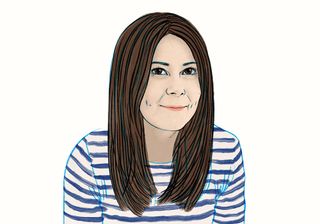Why we need #DesignToo
The design industry probably won't have a Weinstein moment, but that doesn't mean everything's fine.
The day after the Harvey Weinstein scandal broke, I spoke to the Computer Arts team about writing something on 'design's Weinstein moment'. I think both the editor and I half-expected the whole idea to slide, and for the ruckus to blow over, as these things tend to.
We celebrate violent men and paedophiles because their work in some way inspires us. We idolise photographers and 'edgy' CEOs despite mounting accusations of rape, violence and abuse. Is it any wonder we all expected Weinstein and his alleged horrors to slip quietly off the front pages?
Activist Tarana Burke's #MeToo campaign – revived by actress Alyssa Milano – was the tipping point sexual harassment needed. It's hard to discredit over 500,000 women as attention-seeking fantasists when all of them are saying the same thing.
So far, there's hasn't been a big outing in the design industry. I doubt there will be. Design superstars don't really count for much in the real world. Our creeps are small fry when compared to glamorous Hollywood sexual abusers. That's not to say that abuse isn't rife in design. It is. We're just less high-profile, and a bit better at masking it. At the moment.
Male and pale
You only need to look at our senior leaders to know that something isn't right. Despite a decade of diversity initiatives, our creative directors and CEOs are resoundingly male and pale. The UK design industry is overwhelmingly white – 87 per cent so in fact. And just 12 per cent of London's CDs are female.
It's perhaps ironic that Tarana, a woman of colour, is responsible for helping the sexual abuse scandal gain traction, seeing as a damning TUC report into workplace racism in the UK barely registered.
Perhaps we're too worn down by austerity, Trump and Brexit to focus on more than one national horror at a time. This might explain why we chose to neglect the TUC's report. This might explain why we've compartmentalised diversity and made it a white woman's issue. Perhaps the plan is to 'fix' white women before moving onto people of colour, LGBT+ communities and people with disabilities. It's like the supermarket meat counter – take a number and wait.
Get the Creative Bloq Newsletter
Daily design news, reviews, how-tos and more, as picked by the editors.

Let's be clear. It took American Apparel years to fire Dov Charney, despite multiple harassment cases. Vogue only severed ties with Terry Richardson recently, despite a cacophony of complaints. The industry, in fact, the world, only stopped disbelieving women because they had no choice.
It's nice to think that some handsy creative directors might be sweating it out right now, but that's just the tip of the iceberg. This type of abuse is part of a much bigger problem. I'm not here to mitigate or diminish the experiences of every woman who's been assaulted, but focusing solely on sexual harassment won't solve the problem of who has the power and why it's being abused.
The Harvey Weinstein story has forced men (don't you dare #notallmen me) to confront some very sketchy behaviour. It's given women an opportunity to be heard, and to an extent, to be believed. We must now share that same courtesy with others who've had their opportunities limited by the discrimination that's rife in our industry.
Fight the power
We pretend the design industry is a meritocracy. That we'll get far with hard work and the right attitude, but that's not the case. There's a reason why we're so white, and it's the same reason so many of our leaders are male. Power is abused to be retained.
Women are taught rape is a consequence of their actions. Under-represented people in the industry are taught the same lessons. They're put in charge of underfunded, unsupported diversity initiatives and tasked with solving an enormous problem from a position of limited authority. And when these initiatives fail, we blame them, not the leaders who continue to remake the industry in their own image.
I work at Dare, the only truly diverse agency I've ever encountered. Diversity isn't a link in its footer, it's a guiding principle. The board's diverse and so are the staff. It really is that simple.
How we, as an industry, move forward from Weinstein, sexual harassment and institutional discrimination will either make or break us. People like me have been speaking about these subjects for a long time. Nothing changes. We need to hear these words from the people with power, from those actually able to do something about it.

Thank you for reading 5 articles this month* Join now for unlimited access
Enjoy your first month for just £1 / $1 / €1
*Read 5 free articles per month without a subscription

Join now for unlimited access
Try first month for just £1 / $1 / €1
